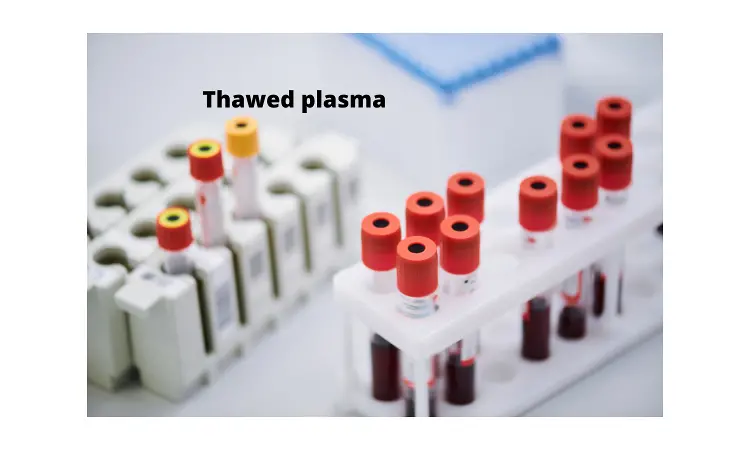- Home
- Medical news & Guidelines
- Anesthesiology
- Cardiology and CTVS
- Critical Care
- Dentistry
- Dermatology
- Diabetes and Endocrinology
- ENT
- Gastroenterology
- Medicine
- Nephrology
- Neurology
- Obstretics-Gynaecology
- Oncology
- Ophthalmology
- Orthopaedics
- Pediatrics-Neonatology
- Psychiatry
- Pulmonology
- Radiology
- Surgery
- Urology
- Laboratory Medicine
- Diet
- Nursing
- Paramedical
- Physiotherapy
- Health news
- Fact Check
- Bone Health Fact Check
- Brain Health Fact Check
- Cancer Related Fact Check
- Child Care Fact Check
- Dental and oral health fact check
- Diabetes and metabolic health fact check
- Diet and Nutrition Fact Check
- Eye and ENT Care Fact Check
- Fitness fact check
- Gut health fact check
- Heart health fact check
- Kidney health fact check
- Medical education fact check
- Men's health fact check
- Respiratory fact check
- Skin and hair care fact check
- Vaccine and Immunization fact check
- Women's health fact check
- AYUSH
- State News
- Andaman and Nicobar Islands
- Andhra Pradesh
- Arunachal Pradesh
- Assam
- Bihar
- Chandigarh
- Chattisgarh
- Dadra and Nagar Haveli
- Daman and Diu
- Delhi
- Goa
- Gujarat
- Haryana
- Himachal Pradesh
- Jammu & Kashmir
- Jharkhand
- Karnataka
- Kerala
- Ladakh
- Lakshadweep
- Madhya Pradesh
- Maharashtra
- Manipur
- Meghalaya
- Mizoram
- Nagaland
- Odisha
- Puducherry
- Punjab
- Rajasthan
- Sikkim
- Tamil Nadu
- Telangana
- Tripura
- Uttar Pradesh
- Uttrakhand
- West Bengal
- Medical Education
- Industry
Prehospital thawed plasma lifesaving and cost-effective for trauma patients: JAMA

Trauma is the third leading cause of mortality in the US, which reported 48 deaths per 100000 persons in 2018. Hemorrhage is the most common preventable cause of trauma mortality rates. A new study by Dr Katherine A. Hrebinko, MD and team reported that pre hospital thawed plasma transfusion during air medical transport for trauma patients in hemorrhagic shock was lifesaving and cost-effective. The study is published in JAMA Surgery journal.
The objective of the study was to evaluate the cost-effectiveness of prehospital thawed plasma transfusion in trauma patients with hemorrhagic shock during air medical transport.
The study was designed as a decision tree and Markov model to compare standard care and prehospital thawed plasma transfusion using published and unpublished patient-level data from the Prehospital Plasma in Air Medical Transport in Trauma Patients at Risk for Hemorrhagic Shock (PAMPer) trial conducted from May 2014 to October 2017, health care and trauma-specific databases, and the published literature. Prehospital transfusion, short-term inpatient care, and lifetime health care costs and quality of life outcomes were included. One-way, 2-way, and Monte Carlo probabilistic sensitivity analyses were performed across clinically plausible ranges. Data were analyzed in December 2019.
The results of the study were found to be
• Relative costs and health-related quality of life were evaluated by an incremental cost-effectiveness ratio at a standard willingness-to-pay threshold of $100 000 per quality-adjusted life-year (QALY).
• The trial included 501 patients in the modified intention-to-treat cohort. Median (interquartile range) age for patients in the thawed plasma and standard care cohorts were 44 (31-59) and 46 (28-60) years, respectively. Overall, 364 patients (72.7%) were male.
• Thawed plasma transfusion was cost-effective with an incremental cost-effectiveness ratio of $50 467.44 per QALY compared with standard care. The preference for thawed plasma was robust across all 1- and 2-way sensitivity analyses.
• When they considered only patients injured by a blunt mechanism, the incremental cost-effectiveness ratio decreased to $37 735.19 per QALY. Thawed plasma was preferred in 8140 of 10 000 iterations (81.4%) on probabilistic sensitivity analysis.
• A detailed analysis of incremental costs between strategies revealed most were attributable to the in-hospital and postdischarge lifetime care of critically ill patients surviving severe trauma.
Dr Hrebinko and team concluded that "In this study, prehospital thawed plasma transfusion during air medical transport for trauma patients in hemorrhagic shock was lifesaving and cost-effective compared with standard care and should become commonplace." They also stated that States with centralized air medical transport systems may institute and coordinate statewide plasma distribution, restocking, and recycling to support more efficient resource use and spread costs over a greater number of eligible patients.
For further information: doi:10.1001/jamasurg.2021.4529.
Medical Dialogues consists of a team of passionate medical/scientific writers, led by doctors and healthcare researchers. Our team efforts to bring you updated and timely news about the important happenings of the medical and healthcare sector. Our editorial team can be reached at editorial@medicaldialogues.in.
Dr Kamal Kant Kohli-MBBS, DTCD- a chest specialist with more than 30 years of practice and a flair for writing clinical articles, Dr Kamal Kant Kohli joined Medical Dialogues as a Chief Editor of Medical News. Besides writing articles, as an editor, he proofreads and verifies all the medical content published on Medical Dialogues including those coming from journals, studies,medical conferences,guidelines etc. Email: drkohli@medicaldialogues.in. Contact no. 011-43720751


